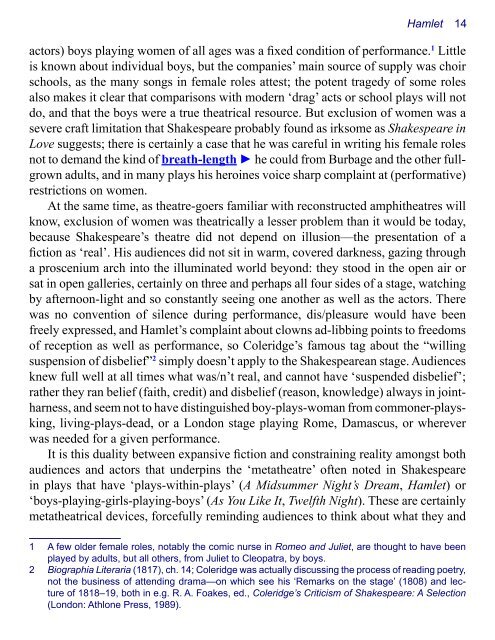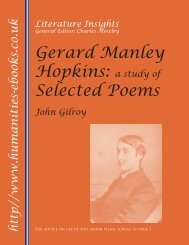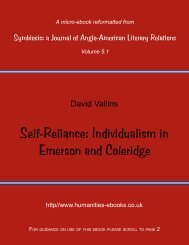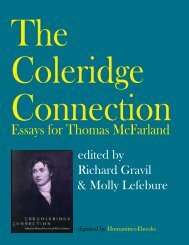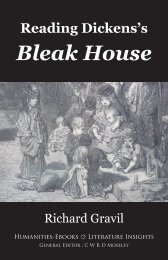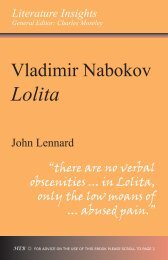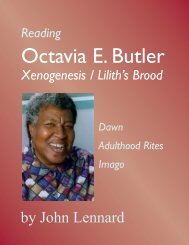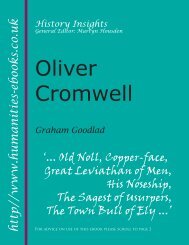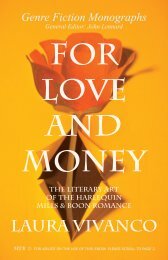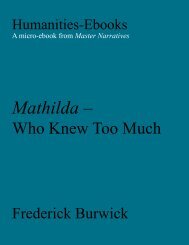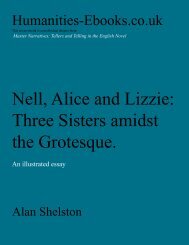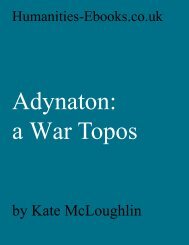William Shakespeare - Humanities-Ebooks
William Shakespeare - Humanities-Ebooks
William Shakespeare - Humanities-Ebooks
Create successful ePaper yourself
Turn your PDF publications into a flip-book with our unique Google optimized e-Paper software.
Hamlet 14<br />
actors) boys playing women of all ages was a fixed condition of performance. Little<br />
is known about individual boys, but the companies’ main source of supply was choir<br />
schools, as the many songs in female roles attest; the potent tragedy of some roles<br />
also makes it clear that comparisons with modern ‘drag’ acts or school plays will not<br />
do, and that the boys were a true theatrical resource. But exclusion of women was a<br />
severe craft limitation that <strong>Shakespeare</strong> probably found as irksome as <strong>Shakespeare</strong> in<br />
Love suggests; there is certainly a case that he was careful in writing his female roles<br />
not to demand the kind of breath-length ► he could from Burbage and the other fullgrown<br />
adults, and in many plays his heroines voice sharp complaint at (performative)<br />
restrictions on women.<br />
At the same time, as theatre-goers familiar with reconstructed amphitheatres will<br />
know, exclusion of women was theatrically a lesser problem than it would be today,<br />
because <strong>Shakespeare</strong>’s theatre did not depend on illusion—the presentation of a<br />
fiction as ‘real’. His audiences did not sit in warm, covered darkness, gazing through<br />
a proscenium arch into the illuminated world beyond: they stood in the open air or<br />
sat in open galleries, certainly on three and perhaps all four sides of a stage, watching<br />
by afternoon-light and so constantly seeing one another as well as the actors. There<br />
was no convention of silence during performance, dis/pleasure would have been<br />
freely expressed, and Hamlet’s complaint about clowns ad-libbing points to freedoms<br />
of reception as well as performance, so Coleridge’s famous tag about the “willing<br />
suspension of disbelief” simply doesn’t apply to the <strong>Shakespeare</strong>an stage. Audiences<br />
knew full well at all times what was/n’t real, and cannot have ‘suspended disbelief’;<br />
rather they ran belief (faith, credit) and disbelief (reason, knowledge) always in jointharness,<br />
and seem not to have distinguished boy-plays-woman from commoner-playsking,<br />
living-plays-dead, or a London stage playing Rome, Damascus, or wherever<br />
was needed for a given performance.<br />
It is this duality between expansive fiction and constraining reality amongst both<br />
audiences and actors that underpins the ‘metatheatre’ often noted in <strong>Shakespeare</strong><br />
in plays that have ‘plays-within-plays’ (A Midsummer Night’s Dream, Hamlet) or<br />
‘boys-playing-girls-playing-boys’ (As You Like It, Twelfth Night). These are certainly<br />
metatheatrical devices, forcefully reminding audiences to think about what they and<br />
<br />
<br />
A few older female roles, notably the comic nurse in Romeo and Juliet, are thought to have been<br />
played by adults, but all others, from Juliet to Cleopatra, by boys.<br />
Biographia Literaria (1817), ch. 14; Coleridge was actually discussing the process of reading poetry,<br />
not the business of attending drama—on which see his ‘Remarks on the stage’ (1808) and lecture<br />
of 1818–19, both in e.g. R. A. Foakes, ed., Coleridge’s Criticism of <strong>Shakespeare</strong>: A Selection<br />
(London: Athlone Press, 1989).


